
Sands of Iwo Jima is a 1949 war film starring John Wayne that follows a group of United States Marines from training to the Battle of Iwo Jima during World War II. The film, which also features John Agar, Adele Mara and Forrest Tucker, was written by Harry Brown and James Edward Grant, and directed by Allan Dwan. The picture was a Republic Pictures production.

Ira Hamilton Hayes was an Akimel O'odham Indigenous American and a United States Marine during World War II. Hayes was an enrolled member of the Gila River Indian Community, located in Pinal and Maricopa counties in Arizona. He enlisted in the United States Marine Corps Reserve on August 26, 1942, and, after recruit training, volunteered to become a Paramarine. He fought in the Bougainville and Iwo Jima campaigns in the Pacific War.
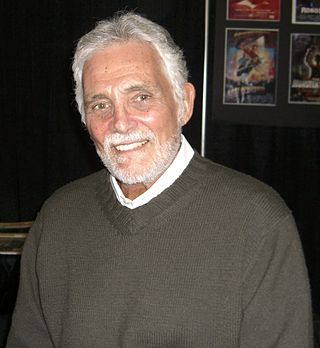
Albert David Hedison Jr. was an American film, television, and stage actor. He was known for his roles as the title character in The Fly (1958), Captain Lee Crane in the television science fiction drama Voyage to the Bottom of the Sea (1964–1968), and CIA agent Felix Leiter in two James Bond films, Live and Let Die (1973) and Licence to Kill (1989).

PT 109 is a 1963 American Technicolor Panavision biographical war film depicting the actions of John F. Kennedy as an officer of the United States Navy in command of Motor Torpedo Boat PT-109 in the Pacific theater of World War II. The film was adapted by Vincent Flaherty and Howard Sheehan from the book PT 109: John F. Kennedy in World War II by Robert J. Donovan, and the screenplay was written by Richard L. Breen. Cliff Robertson stars as Kennedy, and the film features performances by Ty Hardin, James Gregory, Robert Culp and Grant Williams.
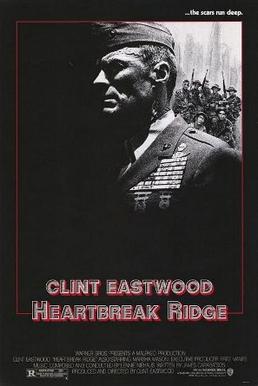
Heartbreak Ridge is a 1986 American war film directed and produced by Clint Eastwood, who also starred in the film. The film co-stars Marsha Mason, Everett McGill, and Mario Van Peebles, and was released in the United States on December 5, 1986. The story centers on a U.S. Marine nearing retirement who gets a platoon of undisciplined Marines into shape and leads them during the American invasion of Grenada in 1983.

Roy Cameron Jenson, also known and credited as Roy Jensen, was a Canadian American football player, stuntman, and actor.

Retreat, Hell! is a 1952 American war film about the 1st Marine Division in the Korean War, directed by Joseph H. Lewis. It stars Frank Lovejoy as a career Marine battalion commander who is recalled from work at an American embassy, Richard Carlson as a veteran captain and communications specialist of World War II called up from the Marine Corps Reserves, Russ Tamblyn as a seventeen-year-old private who hides his true age to serve with the unit overseas and outdo his older brother, also a Marine, and Nedrick Young. Also appearing in the film is Peter Julien Ortiz, a highly decorated Marine who served in the Office of Strategic Services (OSS) and appeared in various films after retiring from the military.

The 2nd Battalion, 7th Marines (2/7) is a light infantry battalion of the United States Marine Corps. They are based at the Marine Corps Air Ground Combat Center Twentynine Palms and consist of approximately 800 marines and sailors. The battalion falls under the command of the 7th Marine Regiment and the 1st Marine Division.

France Silva was the first United States Marine of Mexican-American and Hispanic heritage to receive the Medal of Honor. He received the Medal of Honor for his meritorious conduct in China during the Boxer Rebellion.
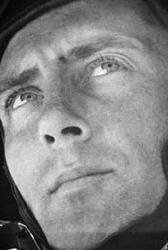
Henry Oliver Hansen was a United States Marine Corps sergeant who was killed in action during the Battle of Iwo Jima in World War II. He was a member of the patrol that captured Mount Suribachi, where he helped raise the first U.S. flag on Iwo Jima on February 23, 1945. He was killed six days later.
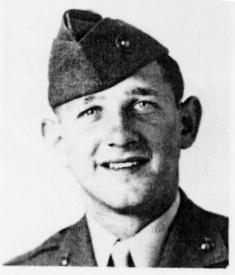
Ralph Anthony "Iggy" Ignatowski was a United States Marine Corps private who was captured and killed by the Japanese in the Battle of Iwo Jima during World War II. He was a member of the Marine rifle company platoon who climbed to the top of Mount Suribachi and raised the American flag on February 23, 1945.
Harold George Schrier was a United States Marine Corps lieutenant colonel who served in World War II and the Korean War. In World War II, he was awarded the Navy Cross for leading the patrol that captured the top of Mount Suribachi, where he helped raise the first U.S. flag on Iwo Jima on February 23, 1945. In the Korean War, he was wounded in North Korea during the Battle of Chosin Reservoir while commanding a rifle company.
Charles W. Lindberg was a United States Marine Corps corporal who fought in three island campaigns during World War II. During the Battle of Iwo Jima, he was a member of the patrol which captured the top of Mount Suribachi where he helped raise the first U.S. flag on the island on February 23, 1945. Six days later, he was wounded in action.
Gung Ho! is a 1943 American war film directed by Ray Enright and starring Randolph Scott. The story is based somewhat on the real-life World War II Makin Island raid led by Lieutenant Colonel Evans Carlson's 2nd Marine Raider Battalion.

Taking Chance is a 2009 American historical drama television film directed by Ross Katz, from a screenplay by Michael Strobl and Katz, based on the journal of the same name by Strobl, who also serves as military consultant. Kevin Bacon's portrayal of Strobl in the film won him a Golden Globe Award for Best Actor in a Miniseries or a Motion Picture Made for Television and a Screen Actors Guild Award for Outstanding Performance by a Male Actor in a Miniseries or Television Movie, among other accolades.
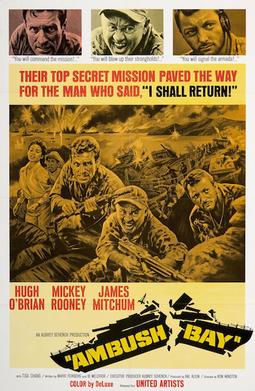
Ambush Bay is a 1966 American war film directed by Ron Winston and starring Hugh O'Brian, Mickey Rooney and James Mitchum. It was filmed on location in the Philippines.

Marine Raiders is a 1944 RKO war film showing a fictional depiction of the 1st Marine Raider Battalion and 1st Marine Parachute Battalion on Guadalcanal, R&R in Australia, retraining in Camp Elliott and a fictional attack in the Solomon Islands. Produced by Robert Fellows, and directed by Harold D. Schuster, it stars Pat O'Brien, Robert Ryan, and Ruth Hussey.

The D.I. is a 1957 American military drama film starring and directed by Jack Webb. The film was produced by Webb's production company Mark VII Limited and distributed by Warner Bros.

Hold Back the Night is a 1956 American war film about the Korean War based on the 1951 novel by Pat Frank, who had been a war correspondent in Korea. The film was directed by Allan Dwan; his third film with John Payne and his third film about the United States Marine Corps, the others being Abroad with Two Yanks (1944) and Sands of Iwo Jima (1949).

Tom Reese was an American actor who appeared in many westerns on both the big- and small-screens.
















